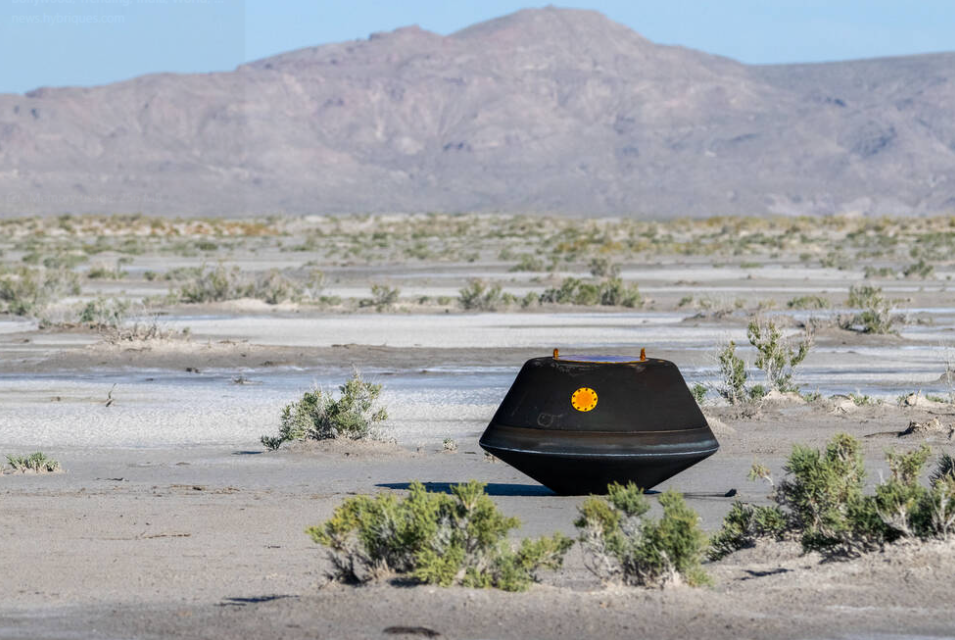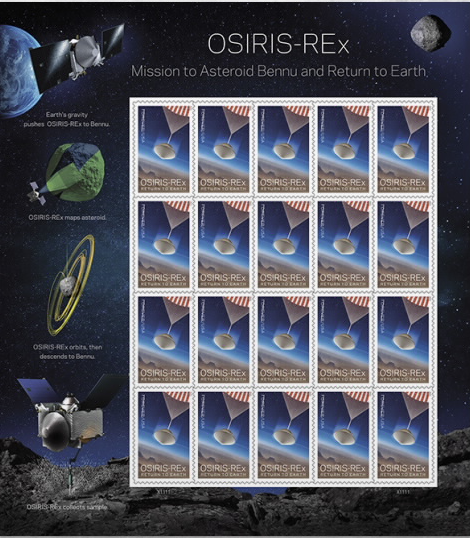OSIRIS-REx NASA’s mission to collect samples from the asteroid Bennu has reached its climax as the first pristine specimens from the celestial body touched down on Earth. This remarkable achievement marks a significant step forward in our understanding of the cosmos and the formation of our solar system.
Collecting Asteroid Samples: OSIRIS-REx
NASA’s OSIRIS-REx spacecraft embarked on its journey to Bennu in 2016 with a primary objective: to gather samples of this ancient asteroid. Bennu, a near-Earth asteroid, was chosen for its rich scientific potential. Scientists believed that it could hold answers to some of the most profound questions about our universe.
The spacecraft successfully approached Bennu, meticulously selected a sampling site, and used its TAGSAM (Touch-And-Go Sample Acquisition Mechanism) arm to collect a substantial amount of asteroid material. After collecting the samples, OSIRIS-REx spent nearly two years orbiting the asteroid, conducting scientific observations and preparations for the long journey back to Earth.

The Long Journey Home
The return journey of OSIRIS-REx was a meticulous and intricate operation. The spacecraft had to perform a precise “backflip” maneuver, where it extended its sample collector to touch the surface for just a few seconds. Once the samples were secured, OSIRIS-REx began its journey back to our planet.
The sample capsule, containing the priceless asteroid specimens, re-entered Earth’s atmosphere and parachuted down to the Utah desert on September 24, 2023. NASA’s team, along with eager scientists and space enthusiasts worldwide, eagerly awaited the capsule’s arrival. This is only the second time in history that NASA has successfully collected samples from an asteroid and returned them to Earth.
Unlocking Cosmic Secrets
The Bennu asteroid samples hold immense scientific value. Scientists anticipate that these ancient remnants may contain clues about the origins of life on Earth and the early solar system. By analyzing the composition of the asteroid, researchers hope to gain insights into the building blocks of planets and the potential for extraterrestrial life.
Additionally, understanding the composition of asteroids like Bennu is crucial for planetary defense efforts. Bennu is classified as a potentially hazardous asteroid, and studying its composition will aid in developing strategies to mitigate potential future threats from similar celestial bodies.
Release from spacecraft

After a seven-year trip, the first asteroid samples ever collected by NASA parachuted onto the Utah desert on Sunday.
The Osiris-Rex spacecraft delivered the sample capsule during a flyby of Earth from a distance of 63,000 miles (100,000 km). Four hours later, as the mothership departed in search of another asteroid, the little capsule touched down on a secluded area of military land.
To everyone’s relief, the capsule was intact and had not been damaged, protecting the samples’ purity over 4.5 billion years. The capsule was hauled there by helicopter at the Defence Department’s Utah Test and Training Range within two hours after touchdown.
The sample canister will be opened in a brand-new, specially created facility at NASA’s Johnson Space Centre in Houston on Monday. The hundreds of pounds (kilos) of moon rocks that the Apollo astronauts collected are already housed in the structure.
The container will be opened in a day or two, at which point scientists will be able to confirm whether the capsule contains at least a cup’s worth of debris from the carbon-rich asteroid known as Bennu. When the spaceship gathered up too much debris during collection three years ago, some overflowed and floated away and the lid became trapped.
Japan was the only other nation to bring back samples, and during two asteroid missions, they collected around a teaspoon.
Osiris-Rex, the mothership, rocketed away on the $1 billion mission in 2016. It reached Bennu two years later and, using a long stick vacuum, grabbed rubble from the small roundish space rock in 2020. By the time it returned, the spacecraft had logged 4 billion miles (6.2 billion kilometers).
What’s Next?
In the coming months and years, scientists will meticulously examine the samples from Bennu. Cutting-edge laboratory techniques will be employed to unlock the secrets hidden within these minuscule fragments of the cosmos. The data gathered will undoubtedly contribute to our understanding of the universe’s formation and evolution.
The successful return of NASA’s first asteroid samples is a testament to human ingenuity and the relentless pursuit of knowledge. It reaffirms our commitment to exploring the cosmos and seeking answers to some of the most profound questions about our existence.
As we stand at the threshold of a new era in space exploration, one thing is clear: the mysteries of the universe continue to beckon, and humanity is more eager than ever to answer that cosmic call.
Future Exploration and Beyond
With the success of the OSIRIS-REx mission, NASA is not resting on its laurels. The agency continues to push the boundaries of space exploration with ambitious plans for the future. One such endeavor is the upcoming mission to the asteroid Psyche, scheduled for the near future. Psyche, unlike Bennu, is believed to be composed primarily of metallic iron and nickel, providing a unique opportunity to explore a world that may resemble the Earth’s core.
NASA is also actively involved in preparing for human missions to the Moon and Mars. The technologies and lessons learned from missions like OSIRIS-REx will play a vital role in these endeavors. As humanity looks to establish a sustainable presence beyond Earth, every piece of knowledge gained from missions like this becomes an essential building block for our cosmic aspirations.
Inspiring the Next Generation
Beyond its scientific significance, the OSIRIS-REx mission serves as an inspiration for future scientists, engineers, and explorers. It underscores the importance of curiosity, determination, and collaboration in pushing the boundaries of what we can achieve.
For young minds with dreams of venturing into the cosmos or unraveling the mysteries of the universe, the success of missions like these offers a compelling narrative. It reminds them that no goal is too distant, and no challenge is insurmountable when we harness the power of human ingenuity and innovation.
Global Collaboration
NASA’s endeavors in space exploration have always been a testament to international cooperation. The OSIRIS-REx mission involved contributions from scientists and researchers around the world. It’s a reminder that our quest for knowledge transcends borders and unites us in a shared pursuit of understanding the cosmos.
As we celebrate the safe return of the Bennu
ALSO READ:ISRO FULL FORM: Unveiling the Acronym




































